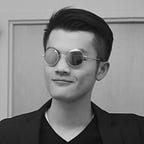What You Can Reconstruct from a Shadow
CVPR 2023
Ruoshi Liu, Sachit Menon, Chengzhi Mao, Dennis Park*, Simon Stent*, and Carl Vondrick
Columbia University, * Toyota Research Institute
TL;DR: we propose a method to reconstruct a 3D object from just its shadow by inverting an implicit 3D generative model
3D Reconstruction from a single image is an under-constrained problem, and occlusions further reduce the number of constraints. To reconstruct occluded objects, we need to rely on additional context. One piece of evidence that people use to uncover occlusions is the shadow cast on the floor by the hidden object. For example, in Fig.1, what hidden object caused that shadow?
We introduce a method that uses the shadows cast by an unobserved object in order to infer the possible 3D volume behind the occlusion. We create a differentiable image formation model that allows us to jointly infer the 3D shape of an object, its pose, and the position of a light source. Since the approach is end-to-end differentiable, we are able to integrate learned priors of object geometry in order to generate realistic 3D shapes of different object categories. Experiments and visualizations show that the method is able to generate multiple possible solutions that are consistent with the observation
of the shadow. Our approach works even when the position of the light
source and object pose are both unknown.
3D Reconstruction by Inverting 3D Generative Model
We achieve this severely under-constrained problem by inverting an implicit 3D generative model G(z).
Given an observation of a shadow s, we optimize for an explanation jointly over the location of the light c, the pose of the object ɸ, and the latent vector of the object 3D shape z. Since every step is differentiable, we are able to solve this optimization problem with gradient descent in the latent space of the generative model. By starting the optimization algorithm with different initialization, we are able to recover multiple possible explanations Ω for the shadow.
Results
Reconstruction of Occluded Object
Real-World Images
Analysis
Optimization Process
Shadow Manipulation
Diversity of Reconstruction
Acknowledgements: This research is based on work supported by Toyota Research Institute, the NSF CAREER Award #2046910, and the DARPA MCS program under Federal Agreement No. N660011924032. SM is supported by the NSF GRFP fellowship. The views and conclusions contained herein are those of the authors and should not be interpreted as necessarily representing the official policies, either expressed or implied, of the sponsors.
